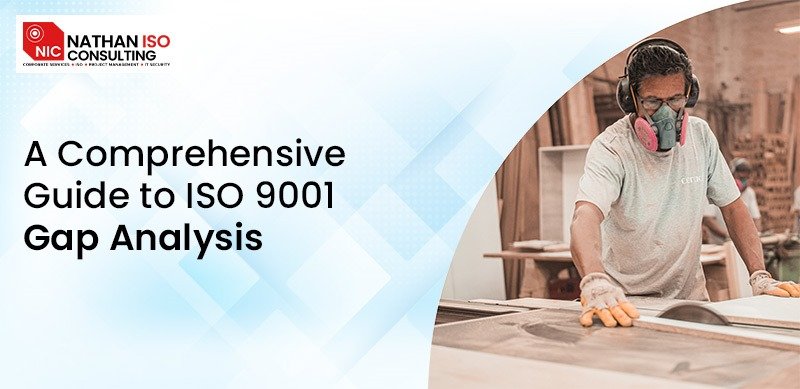ISO 9001 Standard is a well-known international framework that aims to introduce a Quality Management System (QMS) in a business enterprise. When any enterprise or corporation seeks excellent results inside its control unit, production segment, or different forms of services, it is ISO 9001:2015 helps each branch carry out affirmative operations.
However, the steps of ISO 9001 Gap Analysis assist the organization in affirming whether they introduced ISO 9001 QMS appropriately or no longer. This segment is charged with making important changes to the system as compliant.
ISO 9001 Gap Analysis is likewise a main component that has the power to assist ability and present clients/groups regarding the repute of modern Quality Management Systems in the procedures.
Who Does ISO 9001 Gap Analysis?
The truth about ISO 9001 Gap Analysis and audit is that in the audit, the company continually compares approaches and guidelines in keeping with ISO 9001 Requirements. However, an opening analysis will help your enterprise or corporation make some legitimate comparisons with the standard.
Besides, both proposed thoughts that result in achieving the Quality Management System. A commercial enterprise requires an auditor (who should be certified, though) to complete the Gap Analysis. This individual will provide the checklist with vital recommendations and documentation to fulfill the requirements of ISO 9001 Certification.
🚀Fast-Track Your Certification with Proven Expertise
Partner with Nathan ISO Consulting to strengthen your organization's resilience with Certification.
📞 Contact Us TodayThis worldwide trend can most effectively be completed by successfully achieving QMS inside the enterprise. The ISO 9001 Gap Analysis is considered a Pre-Audit. The activities are conducted before the internal audit so that the whole thing might be in the vicinity of similar methods.
Benefits of ISO 9001 Gap Analysis
Conducting an ISO 9001 Gap Analysis can provide an organization with the following blessings
- Identifying Weak Points: If your enterprise is beneath a few strategies, the Gap Analysis will assist you in understanding its capability, determine your team’s overall performance, and affirm whether every plan is effective or no longer. After all the analysis, it’ll deliver the cotillion purpose of performance gaps.
- Measuring Current Resources: If your crew is not aware of statistics of surplus resources, a Gap Analysis can assist the company in acquiring the right goals for the usage of the assets.
- Documentation Requirements: Analyze the necessities and be a tool with reference to Documentation- Policies, Procedures, Work Instructions, Forms/Formats, etc.
- Responsibilities: Setting out specific Responsibilities and Authorities at various stages.
When to perform An ISO 9001 Gap Analysis?
A Gap Analysis for ISO 9001 Certification is required because it allows the identification of amazing blessings that suit the Quality Management System. However, an enterprise should first follow the method before making plans and imposing the QMS inside the system; this may additionally be carried out quarterly, semi-annually, or yearly.
It completely relies upon the management of an enterprise, as they’re right here, they’re while, and they have a way to act to attain deserving goals.
🚀Fast-Track Your Certification with Proven Expertise
Partner with Nathan ISO Consulting to strengthen your organization's resilience with Certification.
📞 Contact Us TodayHow To Perform Gap Analysis Checklist?
Here is the Gap Analysis Checklist that involves in the Gap Analysis phase:
- Scheduling the Gap Analysis
- Select the appropriate date
- Communicate with employees about the processes
- Involve the Top Management and let them know the intent, criteria, and objectives of such Gap Analysis
- Understand the comfort zone of the workforce
- Make sure that everyone should be comfortable answering the auditor’s questions.
- Determine the process as per the area of the facility
- Divide the facilities into different sections for easy Gap Analysis
- If a business hires a third-party audit team, then appoint it to cover different areas of your facility.
- Arrange the Gap Analysis checklists to verify as per the ISO 9001 QMS requirements.
- Conducting the Gap Analysis
- Follow the schedule
- Evaluate the current QMS
- Focus on compliance and non-compliance
- Inform the auditor about all your activities
- Make sure that everything matches ISO 9001 Compliance
- Complete the Gap Analysis Report
- To identify Processes and Areas which are not follow ISO 9001 standard requirements
- To identify Processes and Areas where responsibilities and authorities have not been clearly defined
- To identify Processes and Areas where documentation and records do not exist
- Processes that agree with the ISO 9001 Certification Standard
- Methods that follow the ISO 9001 documentation
- Procedures to redesign that do not comply with the ISO 9001 Standard.
- Processes to activate that are not currently in operation.

